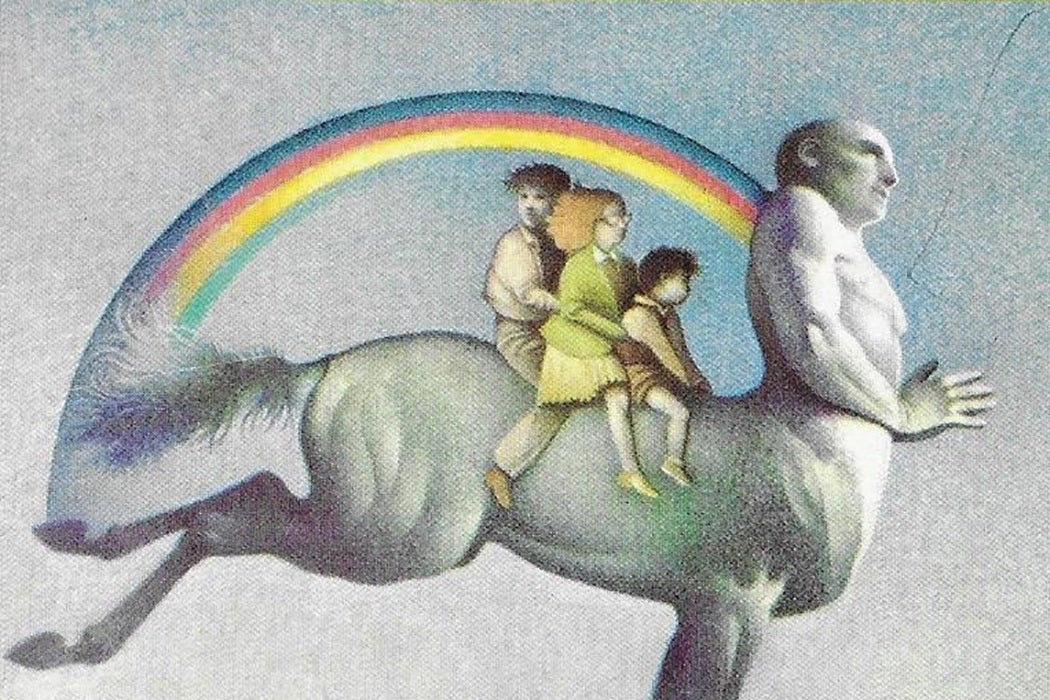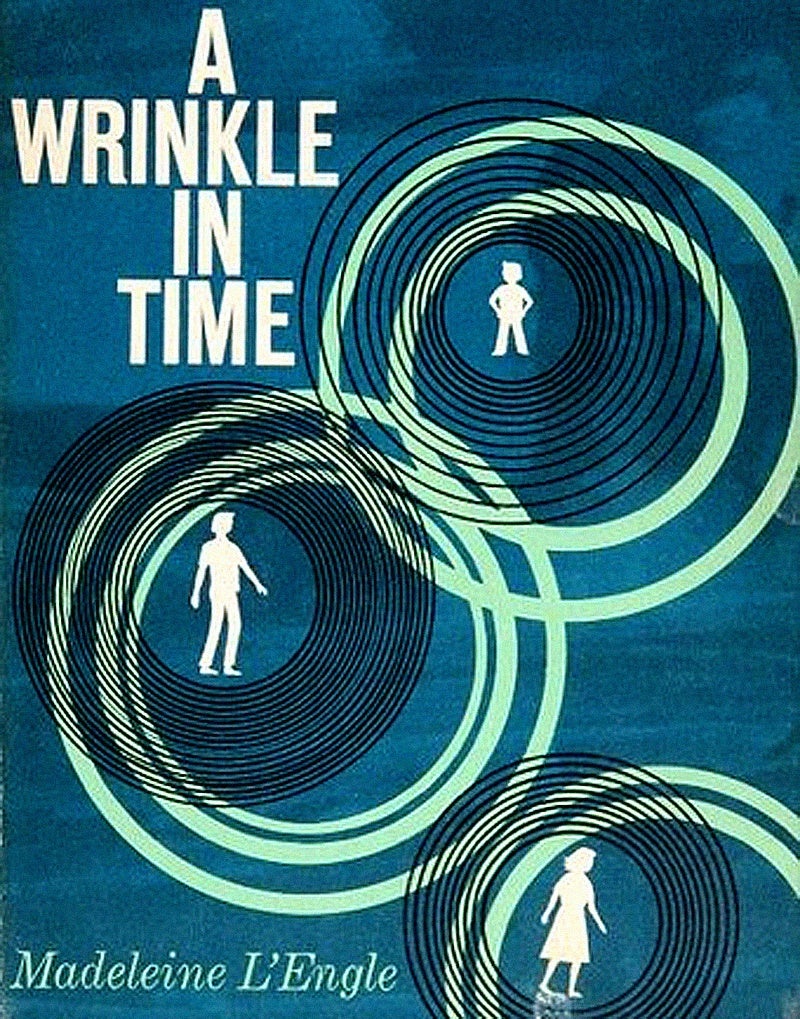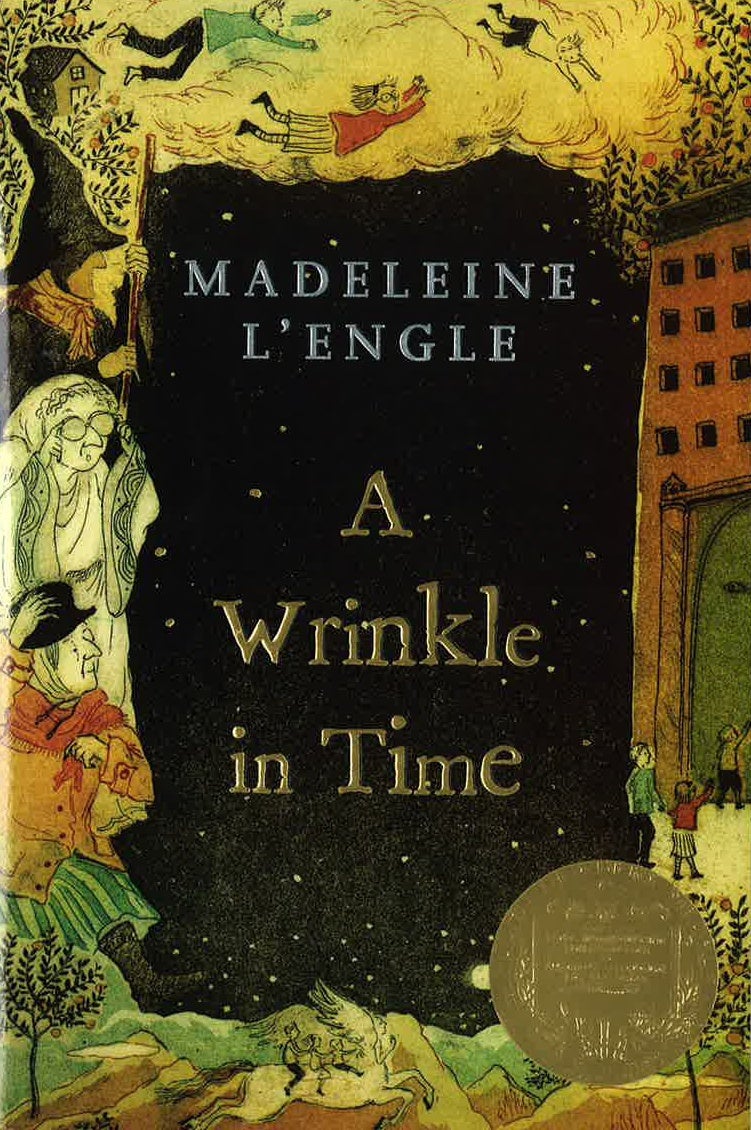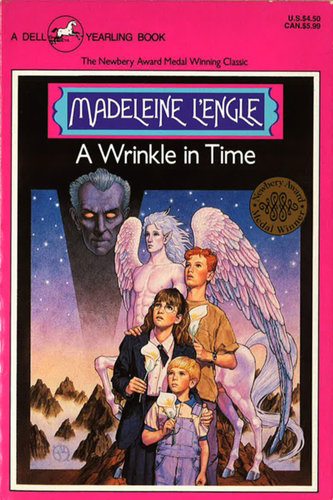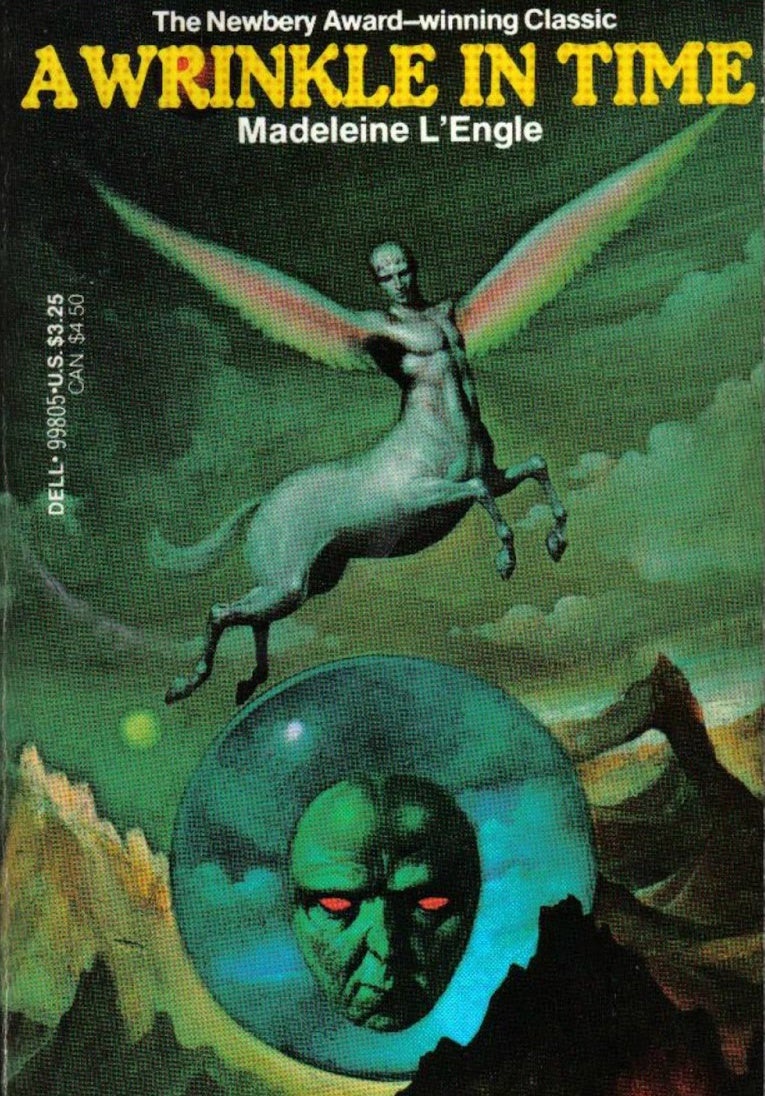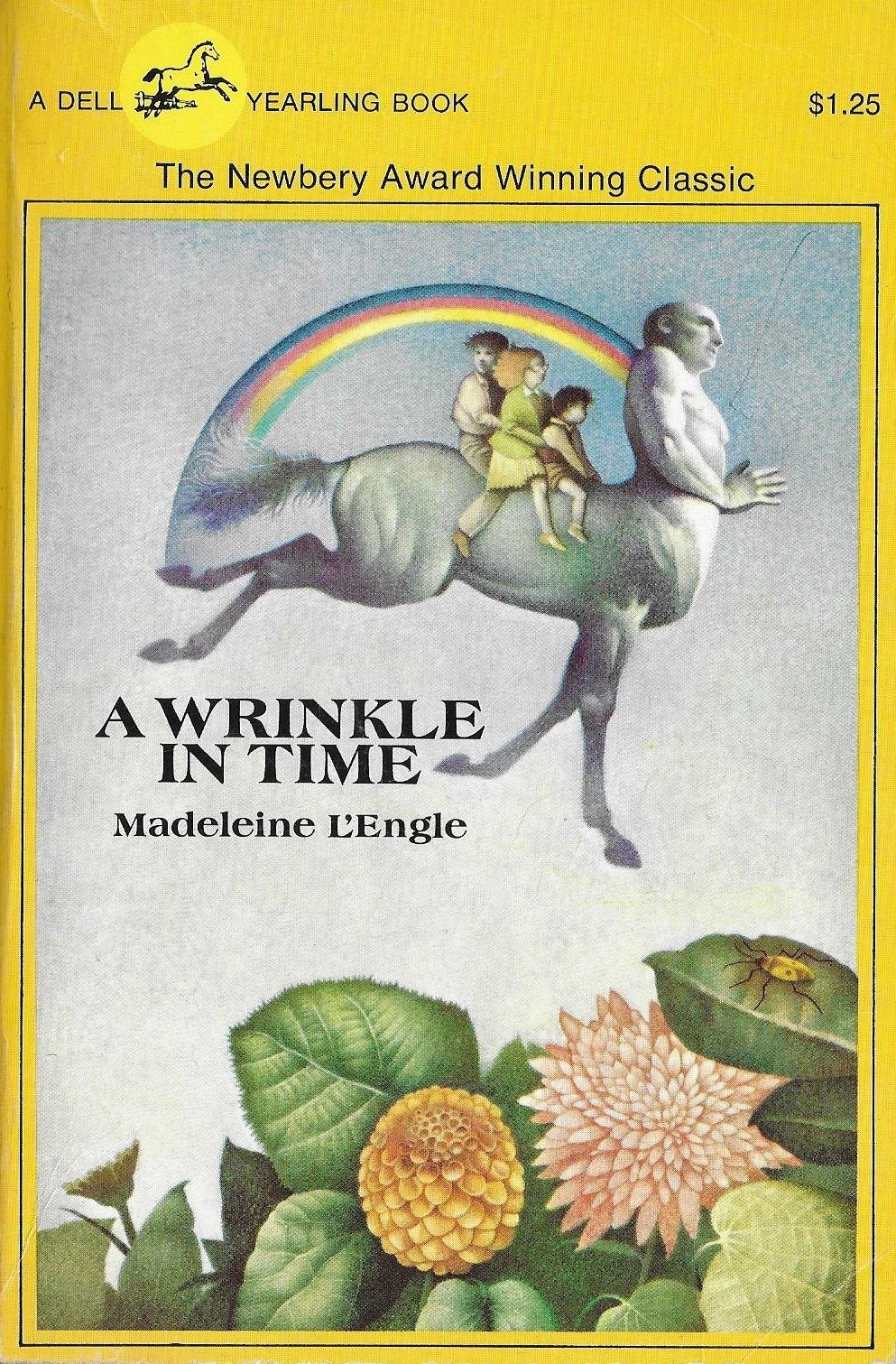In the early 1960s, Madeleine L’Engle struggled to find an audience for A Wrinkle in Time and wondered if it was simply poor timing. “I was, perhaps, out of joint with time. Two of my books for children were rejected for reasons which would be considered absurd today,” she wrote looking back. “Publisher after publisher turned down A Wrinkle in Time because it deals overtly with the problem of evil, and it was too difficult for children, and was it a children’s or an adults’ book, anyhow?”
An improbable success, A Wrinkle in Time was rejected twenty-six times. Editors found it hard to classify and believed its content would be too challenging for children, with its peculiar blend of quantum physics and theology peppered with quotations in French, German, Spanish, Latin, and Greek from sources as wide-ranging as Blaise Pascal, Seneca, Voltaire, and Shakespeare.
The novel, which won the 1963 John Newberry Medal, follows the adventures of preteen Meg Murry and her precocious younger brother, Charles Wallace. The two Murry children, accompanied by neighbor Calvin O’Keefe, travel through space and time to rescue their father, a brilliant physicist who goes missing on planet Camazotz during a top-secret government mission. A trio of extraterrestrial benevolent beings—Mrs. Whatsit, Mrs. Which, and Mrs. Who—helps the children travel to distant planets through multiple dimensions by tesseracts, or wrinkles in time.
The influence of quantum physics on A Wrinkle in Time is undeniable. L’Engle conceived of the book while reading about cosmology on a cross-country road trip with her husband and children. “I started reading what Einstein wrote about time,” she writes. “And I used a lot of those principles to make a universe that was creative and yet believable.”
Quantum physics isn’t the only discipline whose conception of time influences the novel. L’Engle’s fascination with time pervades her fiction and nonfiction, especially as concerns kairos, a concept from classical rhetoric meaning, roughly, to say or do the right thing at the right time.
Both kairos and chronos are Greek words for time. Kairos, a term for which there is no English cognate, is usually defined in opposition to chronos. Put simply, chronos is time that can be objectively, quantitatively measured. Kairos, on the other hand, is more subjective and qualitative. Sometimes theologians translate kairos as “God’s time.” L’Engle seems to prefer the definition “real time.”
On a family tree that appears in later editions of the novel, L’Engle labels the Murry family “Kairos,” with a defining footnote that reads, “real time, pure numbers with no measurement.” Also depicted on the chart are characters from another young adult series, L’Engle’s Meet the Austins. L’Engle labels the Austin family “Chronos,” which she defines as “ordinary, wrist-watch, alarm-clock time.”
In 1969, seven years after L’Engle’s novel was published, the philosopher John E. Smith examined the distinction between chronos and kairos. “[T]he classical literature reveals two Greek words for ‘time’—chronos and kairos,” Smith writes in The Monist. “One term—chronos—expresses the fundamental conception of time as measure, the quantity of duration, the length of periodicity, the age of an objection or artifact, and the rate of acceleration as applied to movements of identifiable bodies… The other term—kairos—points to a qualitative character of time, to the special position an event or action occupies in a series, to a season when something appropriately happens that cannot happen at ‘any’ time, but only at ‘that time’, to a time that marks an opportunity which may not recur.”
Nearly two decades later, in 1986, Smith returned to his consideration of kairos and chronos in an article for The Review of Metaphysics. Work by James L. Kinneavy, an influential scholar whose work shaped the study of rhetoric, helped him understand new dimensions of kairos. Smith writes, “I did not know, for example, that kairos, although it has metaphysical, historical, ethical, and esthetic applications, is a concept whose original home, so to speak, was in the ancient rhetorical traditions.” Kinneavy traced the concept’s rhetorical origins in his landmark 1986 article, “Kairos: A Neglected Concept in Classical Rhetoric.” Later, in an interview about the article, Kinneavy summarized his twenty-page endeavor to define kairos: It is “the right time and due measure.”
In A Wrinkle in Time, determining the right timing for the rescue mission is a frequent topic of discussion for the mysterious Mrs. Ws. Mrs. Who, whose dialogue mostly consists of quotations, warns Charles Wallace: “It’s getting near time, Charlsie, getting near time. Ab honesto virum bonum nihil deterret. Seneca. Nothing deters a good man from doing what is honorable.” Later, Mrs. Who urges the children to wait a little while longer and promises to bring them to their father in due time. “The time is not yet ripe,” she says.
When Mrs. Which prepares to whisk away Meg, Charles Wallace, and Calvin to battle the powers of darkness on planet Camazotz and save Mr. Murry, she appeals to kairos to communicate the urgency of their mission. Just before they wrinkle through time, she lisps, “Sso nnow wee ggo… Tthere iss nott all thee ttime inn tthe worrlld.”
Once they arrive at Camazotz, the three Mrs. Ws offer final instructions to the children. Meg asks when she will finally see her father. Mrs. Whatsit replies, “That I cannot tell you. You will just have to wait until the propitious moment.”
Finally, when Meg must return to Camazotz to save Charles Wallace from the same dark power that once imprisoned their father, she declares: “If I’ve got to go I want to go and get it over with. Each minute you put it off makes it harder.” In response, Mrs. Which confirms, “Itt iss ttime.”
These references to the “ripeness of time” and the “propitious moment” are examples of how the Mrs. Ws work to cultivate a sense of kairos. They help the children judge the proper time to take rhetorical and ethical action against evil.
The rhetorician Michael Harker wrote about the ethical dimensions of kairos, especially as the concept relates to argument, in College Composition and Communication. He suggests that kairos might serve as the base of the rhetorical triangle that consists of Aristotle’s three appeals (logos, pathos, and ethos). As a rhetorical strategy, cultivating a sense of kairos helps writers and orators craft effective calls to action. Importantly, an awareness of kairos offers not an excuse for passing time or delaying action but, instead, an imperative to seize propitious moments with urgency and maximize each opportunity to do right.
Martin Luther King, Jr.’s “I Have a Dream” speech, delivered in 1963—the same year L’Engle’s novel received the Newberry Medal—is commonly used in composition classrooms to illustrate the kairotic moment. His speech serves “to remind America of the fierce urgency of now.” He repeats the phrase, “now is the time,” an instance of the rhetorical device known as anaphora (repetition in neighboring clauses for emphasis). “It would be fatal,” he concludes, “for the nation to overlook the urgency of the moment.”
In his close reading of Martin Luther King, Jr.’s final sermon, the rhetorician Richard Benjamin Crosby demonstrates how King employs the difference between chronos and kairos to critique systemic racism. King rebuts critics who called on civil rights activists to exercise patience. King calls this the “myth of time.” As Crosby writes, “King’s rhetoric routinely characterizes his abstract enemy as the ‘disease’ or ‘sickness’ of racism. The myth of time as ‘chronos’ is inflected in the metaphor of the disease of racism as chronic.” In this final sermon, King extols kairos over chronos, writing:
[The answer to this myth] is that time is neutral… and can be used… constructively or destructively… And it may well be that we will have to repent in this generation… for the appalling indifference of the good people who sit around and say, ‘Wait on time.’
Somewhere we must come to see that human progress never rolls in on the wheels of inevitability. It comes through the tireless efforts and the persistent work of dedicated individuals who are willing to be co-workers with God. So we must help time and realize that the time is always ripe to do right.
Commenting on the timelessness of kairos, Crosby concludes, “We ‘help’ time by stopping its progress and confronting it with divine justice.” He points to theologian Paul Tillich’s influence on modern conceptions of kairos, which Tillich called the “eternal breaking into the temporal.”
L’Engle, who was a devout Episcopalian and served as the librarian and writer-in-residence at the Cathedral Church of St. John the Divine, seems to share both King’s call to be “co-workers with God” and Tillich’s vision of kairos as a transcendent disruption of chronological time. In her book, Walking on Water: Reflections on Faith and Art, L’Engle writes:
In kairos we are completely unself-conscious and yet paradoxically far more real than we can ever be when we are constantly checking our watches for chronological time. The saint in contemplation, lost (discovered) to self in the mind of God is in kairos. The artist at work is in kairos. The child at play, totally thrown outside himself in the game, be it building a sandcastle or making a daisy chain, is in kairos. In kairos we become what we are called to be as human beings, cocreators with God, touching on the wonder of creation.
Apart from its religious implications, this kind of freedom from self-consciousness likely explains, in part, the novel’s resonance with young fans. Anyone who has worried about being an early or late bloomer knows the cultural pressure to develop on time. Right timing has as much to do with fighting evil as it does the more banal aspects of coming of age. Those who feel out of sync with their peers will likely identify with Meg. Giving voice to typical adolescent concerns, Meg says, “I wish I were a different person… I hate myself.” Meg complains of feeling like an oddball, disparages her glasses and braces, fails to get good grades, loses her temper with her teachers and classmates, and struggles with gossip about her absent father.
In a flashback to a conversation with her father before he disappeared, Mr. Murry says to Meg, “Oh, my darling, you’re not dumb. You’re like Charles Wallace. Your development has to go at its own pace. It just doesn’t happen to be the usual pace.” Meg’s mother also assures her that things will get better once she’s “managed to plow through some more time.” Later she urges her to “just give yourself time, Meg.”
On the planet Camazotz, Meg and Charles Wallace encounter right timing gone wrong and come to appreciate the freedom of idiosyncratic timing. In a dystopian town that warns of the tyranny of sameness, rows of tidy gray houses have identical construction and landscaping, down to the number of blooms in the flower gardens. Rather than losing themselves in their games, the children play in synchronized movements. A mother panics when her son fumbles his rubber ball and it bounces away out of rhythm. When the Murrys try to return the ball to the boy, the mother refuses it, saying, “Oh, no! The children in our section never drop balls! They’re all perfectly trained. We haven’t had an Aberration for three years.”
In a pivotal showdown with IT, the disembodied brain controlling Camazotz, Meg shouts down IT’s lies about equality and sameness. Equality, IT wants her to believe, is achieved when everybody is exactly alike. Meg fights back against IT’s mind control and shouts, “Like and equal are not the same thing at all.” In other words, equality does not require the erasure of differences.
Meg’s battle with oppressive sameness is among the book’s most overtly political themes. Kinneavy points out that a possible literary application of kairos is to determine why a particular work of literature resonates with a particular audience in a particular time and place. “What was the current situation, what were the current values, what were the current ethical situations, what were the current political, and so on values of the time,” he says in an interview. According to Kinneavy, kairos encompasses how cultural movements create the propitious moment for effective rhetorical acts, and he goes so far as to claim there can be no rhetoric without kairos.
When Farrar, Straus, and Giroux eventually agreed to publish A Wrinkle in Time, the publishing house warned L’Engle that the novel’s difficulty would limit its appeal to high school aged readers and that it was unlikely to sell well. Surprisingly, the novel was an instant hit with both young readers and critics, and it has continued to remain popular. Today, more than fourteen million copies of the novel are in print. When it was first published, L’Engle’s novel helped young readers confront Cold War anxieties about the dangers of conformity and authoritarianism, encouraging them to embrace messages about the power of love and the celebration of difference—messages that continue to resonate with today’s young fans and contribute to the novel’s timeliness and timelessness.
